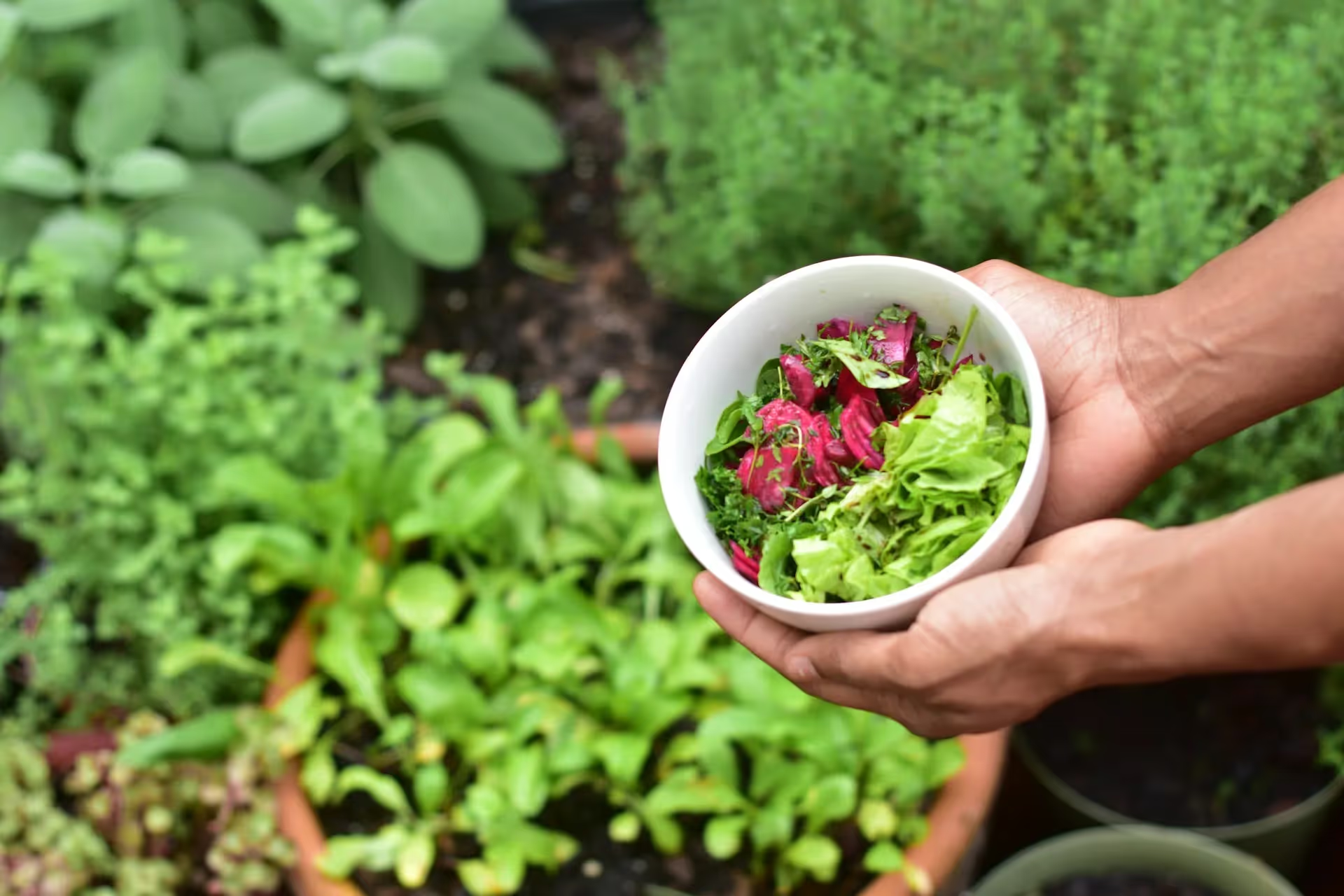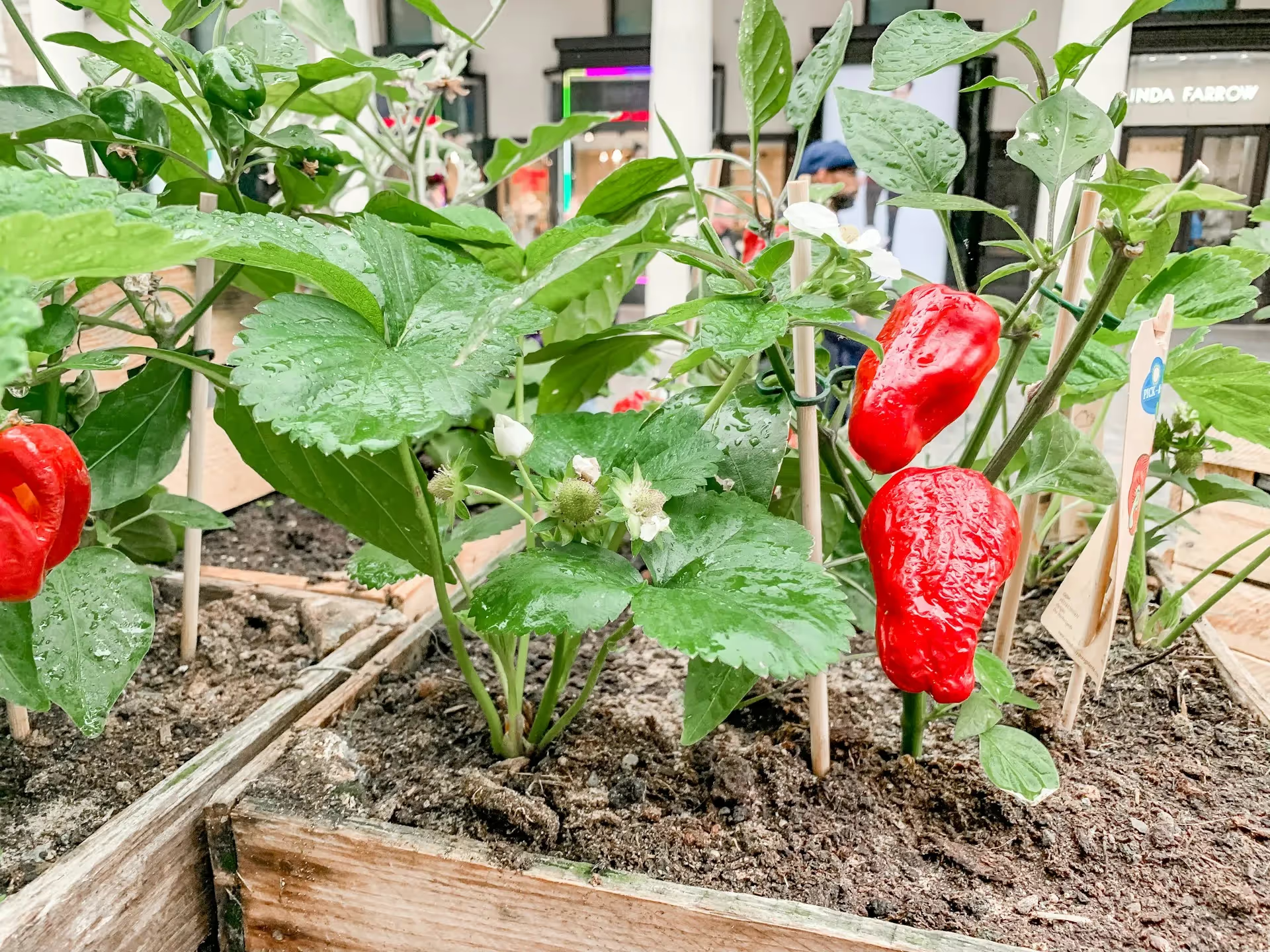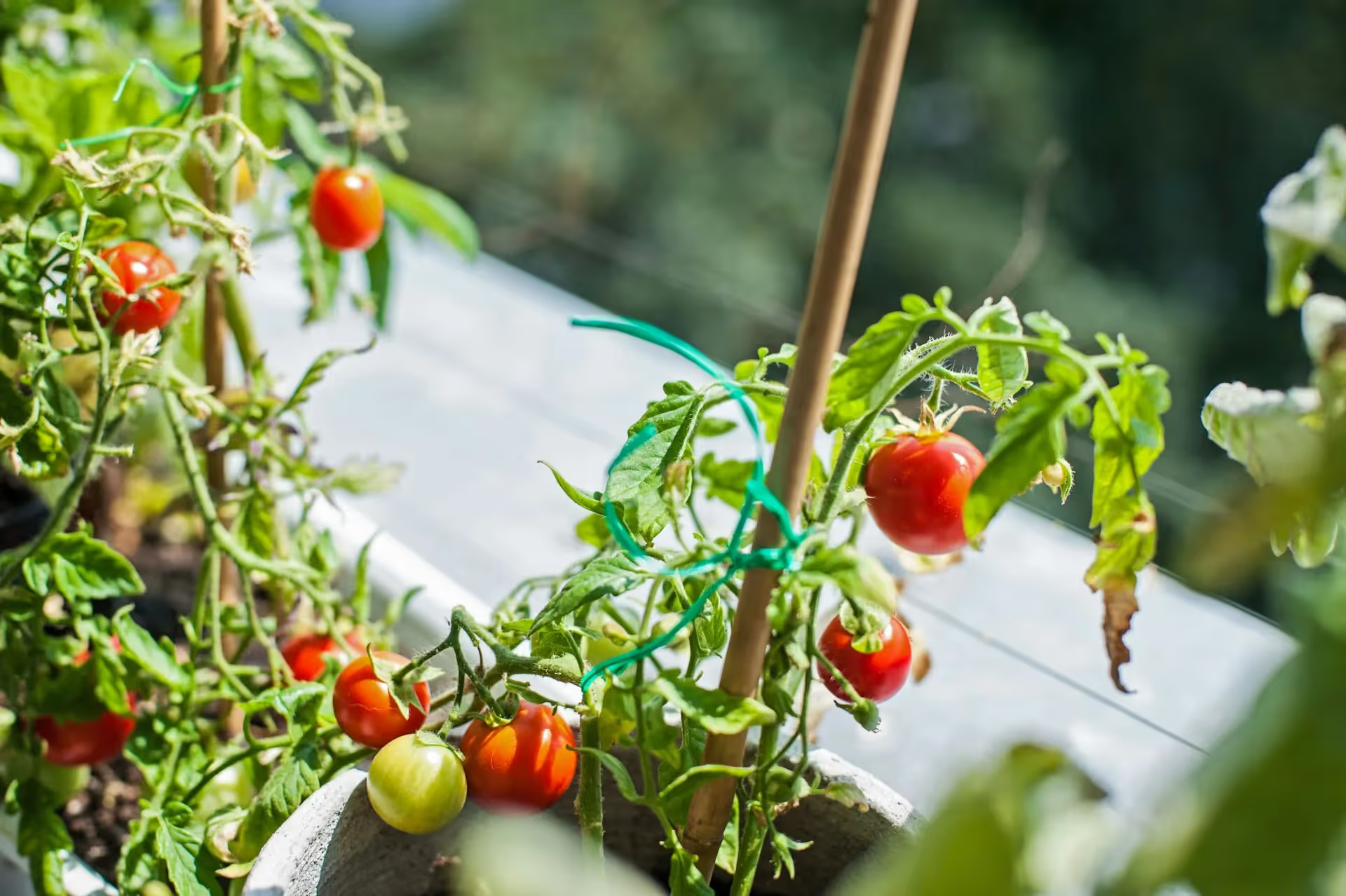
Be a Land Steward.
Sign up for Greenhouse Gases -
a weekly-ish newsletter that will teach you the science behind regenerative gardening, with action steps to help you make a difference in your backyard.

Sign up for Greenhouse Gases -
a weekly-ish newsletter that will teach you the science behind regenerative gardening, with action steps to help you make a difference in your backyard.
Welcome back to our apartment homesteading series! If you’ve read our previous guide, "Container Gardening 101: From Pots to Plants," you already know the basics of growing vegetables in containers.
In this article, we’ll dive deeper into the art of regenerative gardening. You’ll learn how to apply these sustainable practices to small spaces and container gardens. Whether you’re looking to start a balcony garden or maximize your urban backyard, these regenerative tips will help you create a thriving, eco-friendly oasis.
Before we get into the specifics, let’s briefly recap what regenerative gardening means.
Regenerative gardening is a sustainable way to tend to your outdoor space by restoring and enhancing the health of your ecosystem.
Unlike conventional gardening, which often focuses on short-term yields, regenerative gardening is a nature-based solution to environmental issues. In addition to not applying synthetic chemicals on plants, regenerative practices go beyond organic gardening in order to replenish soil health, promote biodiversity, and sequester carbon.
All together, these principles contribute to the sustainability and resilience of our environment.

Absolutely! Small gardens, urban backyards, and container gardens can greatly benefit from regenerative gardening practices. These methods are not only feasible but can transform even the tiniest spaces into productive, eco-friendly havens.
Even in limited spaces, these methods can:

Ecofaith Recovery is a group of folks who combine spiritual practice with environmental stewardship. They conducted an estimation of carbon stored in the soil of a member’s raised bed garden. They sent a soil sample off to be analyzed for carbon, and then did a calculation based on the depth of the organic-rich soil layer. They say, “Our conservative estimate is at least 600 pounds of carbon in those beds.”
The EPA carbon calculator says that this is equivalent the the amount of carbon sequestered by planting 16.5 tree seedlings and growing them for 10 years!

You may be dreaming of one day owning a large property to plant your own idyllic garden. If that’s your dream - I hope you get there! But - don’t let your current space go uncultivated in the meantime. No matter the size, it holds heaps of potential.
Take inspiration from a recent experiment carried out by the University of Calgary along with Root and Regenerate Urban Farms and the Young Agrarians. From May through September in 2021, they were able to harvest around 7,000 pounds of food - from 9 separate urban spaces. When combined, these spaces were just .26 acres!
Let’s do some simple math here. On average, each growing space was .028 acres. That’s around 1220 square feet, or a 30 x 40 foot garden. Divide 7000/9 to find that each of these spaces yielded 777ish pounds of food.
Let’s say that you have a backyard half the size - 15x20ft. Is there the potential for 388 pounds of food there?
Let’s go smaller - a 4 x 5 ft balcony planted at the same intensity could yield nearly 100 pounds of food over a growing season.
Now this is just some calculations and extrapolations. But it really shows the potential of careful planning and maximizing the space that you have available to you.

The foundation of regenerative gardening is healthy soil.
For containers, opt for a high-quality, organic potting mix. Ideally, find a peat-free variety to protect our vital peat bogs, which are significant carbon sinks. Once mined, peat can take thousands of years to regenerate again.
Better yet, create your own mix. My go-to is a blend of 40% coir, 40% compost, and 20% organic rice hulls. I find that this mixture not only retains moisture effectively but also improves soil aeration. It’s a great mix for germinating seeds or transplanting more established plants.
Regularly add organic matter such as compost or worm castings to maintain soil fertility. This will help you to improve soil health in containers and raised beds.
All you have to do is explore the forest floor or an untended meadow to see how nature inherently is filled with a variety of plant species. Follow nature’s lead and mix things up in your garden. Companion planting—pairing plants that benefit each other—can maximize space and resources. For example, grow basil alongside tomatoes; basil repels pests and improves tomato growth.
Adopt water-saving strategies such as mulching to reduce evaporation and maintain soil moisture level.
This is not only recommended for regenerative farmers on a large scale, but for container gardening, too. Dr. Colby Moorberg, a soil scientist with a focus on water resources, says “Adding mulch to the soil surface reduces how much water is evaporated from the soil.”
Self-watering containers and drip irrigation systems can also be extremely efficient, ensuring that your plants receive consistent hydration without waste. In my garden, drip irrigation has drastically reduced the amount of water that goes into our garden.
Dr. William Johnson, a horiculturist at Texas A&M AgriLife Extension Service, answers the question “Does container planting take more water? It takes less, overall, than a garden plot, but may require more frequent watering.”
Shun synthetic chemicals in favor of natural alternatives. Use compost tea or organically certified (OMRI) inputs to enrich your soil. For pest control, neem oil is highly effective, or you can manually remove harmful insects. Additionally, planting flowers like marigolds can naturally deter pests.
There are a few inputs that turn up the regenerative quality of your soil.
If you live in an apartment, you might not be able to make your own compost in the way showcased most frequently - a large bin in your backyard. Instead, try Bokashi Composting. This is a fermentation process that can take place in a 5-gallon bucket with a lid under your kitchen sink. The fermentation is kicked off with Bokashi bran, which has the microbes necessary for the decomposition process (source: Bokashi Living).
Gardening is ever-evolving. Keep learning and experimenting with different regenerative practices to find what works best in your unique space.
I’ve adapted my 1-acre garden’s regenerative practices to my containers, observing how techniques like composting and companion planting translate to smaller scales.


Although my gardening experience is on a larger scale, I’ve delved deeply into understanding how regenerative practices can be adapted for small urban spaces. I think it’s important that everyone, regardless of where they live, has access to a garden of some kind.
Through extensive research and experimentation in my own grow bags and pots, I’ve found that the core principles of regenerative gardening—like healthy soil and biodiversity—are universally beneficial.
I’ve found success by adapting techniques like composting and companion planting to my container gardens, and I’m continually inspired by the innovations urban gardeners bring to the table.
Adapting regenerative gardening practices to small spaces and container gardens is not only possible but highly rewarding. Focus on soil health, plant diversity, water conservation, and natural pest control to create a thriving garden that supports the environment. Happy gardening, and remember, every small step counts towards a more sustainable future!
Further Reading and Resources